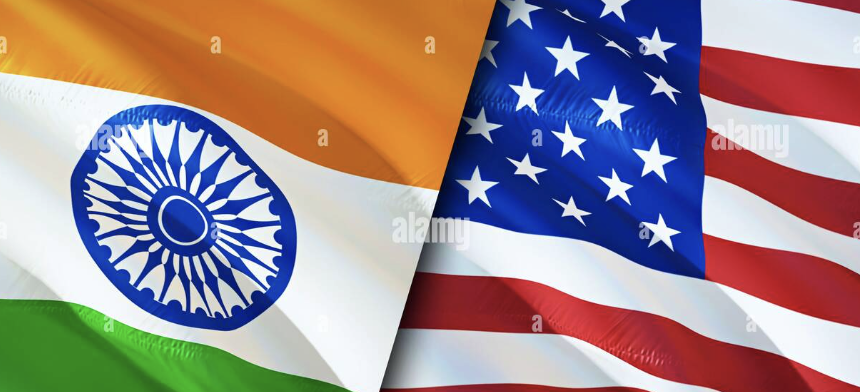Table of contents
- Balancing Economic and Humanitarian Interests
- Revitalizing Bilateral Trade and Investment
- Facilitating Technological and Strategic Collaboration
- Supporting People-to-People Ties and Diaspora Engagement
- Diplomacy as a Conflict Management Tool
- Challenges for Diplomatic Efficacy
- Future Outlook and the Way Forward
- Balancing Economic and Humanitarian Interests
- Revitalizing Bilateral Trade and Investment
- Facilitating Technological and Strategic Collaboration
- Supporting People-to-People Ties and Diaspora Engagement
- Diplomacy as a Conflict Management Tool
- Challenges for Diplomatic Efficacy
- Future Outlook and the Way Forward
Diplomatic negotiations will play a pivotal role in easing the restrictions between India and the United States, particularly in areas affected by recent changes such as the steep hike in H-1B visa fees and ongoing trade disputes. The evolving geopolitical landscape, economic interdependencies, and mutual interests in technology and innovation underscore the importance of diplomacy as the primary mechanism to resolve tensions and foster cooperation.
Balancing Economic and Humanitarian Interests
The new U.S. policy imposing a $100,000 fee on new H-1B visa applicants has stirred concerns in India about the humanitarian impact on skilled professionals and their families, as well as the potential disruption to Indian IT services that play a significant economic role both in India and the U.S. (MEA statement). Diplomatic negotiations provide a platform to balance these economic realities with humanitarian considerations by facilitating dialogue that could lead to fee adjustments, exemptions, or transitional measures to protect affected families. Indian diplomats will likely press for safeguards, relief mechanisms, and guarantees of fair treatment for Indian professionals working in the U.S. to ensure the bilateral relationship remains strong despite regulatory changes.
Revitalizing Bilateral Trade and Investment
Trade talks are ongoing to revive and strengthen the economic ties disrupted by tariffs and visa policy shifts. Commerce Minister Piyush Goyal’s planned visit to the U.S. aims to advance negotiations on a bilateral trade agreement targeting significant growth in trade volume by 2030. Diplomatic engagement in these talks will be critical to resolving contentious issues such as tariffs on Indian exports, market access in sectors like agriculture and dairy, and the H-1B visa fee hike. Successful negotiations can lead to mutually beneficial agreements that foster increased investment, technology exchange, and job creation, thus reducing the political friction caused by abrupt unilateral policy decisions.
Facilitating Technological and Strategic Collaboration
Beyond trade and visa issues, diplomacy steers broader strategic collaborations, particularly in emerging technologies where India and the U.S. are key partners. Initiatives like the India-U.S. Initiative on Critical and Emerging Technologies (iCET) highlight how diplomatic channels facilitate joint research in AI, quantum computing, and semiconductor technologies, strengthening ties and counterbalancing global competitors such as China. Diplomacy thus plays a dual role of promoting sector-specific cooperation while ensuring the bilateral relationship adapts to geopolitical changes and shared goals in innovation, security, and governance.
Supporting People-to-People Ties and Diaspora Engagement
The extensive Indian diaspora, especially skilled professionals in technology, contributes substantially to the U.S. economy and cultural landscape. Diplomatic efforts help maintain these people-to-people ties by addressing visa and immigration policy concerns, ensuring smooth consular services, and establishing emergency support for families affected by sudden policy shifts. Sustainable visa frameworks negotiated diplomatically can uphold the diaspora’s role as bridges between the two countries, facilitating commerce, innovation, and cultural exchange.
Diplomacy as a Conflict Management Tool
In the face of unexpected and sensitive policy changes, diplomacy serves as a conflict management tool that allows the two countries to discuss grievances, clarify misunderstandings, and seek common ground to avoid escalation. Diplomatic dialogue can also create channels for informal consultations and multilateral discussions involving industry bodies and think tanks, enabling a more nuanced approach to complex issues like immigration reform, trade imbalances, and technology transfer.
Challenges for Diplomatic Efficacy
Despite the promise of diplomacy, challenges such as domestic political pressures in both countries, differences in policy priorities, and public sentiment can complicate negotiations. The U.S. administration’s focus on protecting American jobs and addressing immigration concerns will require India to demonstrate the value of its professionals and economic partnerships convincingly. Likewise, India must manage domestic expectations and the impacts on its tech sector while engaging constructively with U.S. counterparts.
Future Outlook and the Way Forward
The rapid evolution of the geopolitical landscape demands that diplomatic negotiations be persistent, multifaceted, and adaptive. The upcoming trade talks, as well as ongoing structured dialogues on visa policies and tech collaboration, will be decisive in shaping whether the two nations can overcome current hurdles and deepen their partnership. Future diplomacy is likely to focus not only on immediate economic and immigration issues but also on building resilient partnerships that can withstand political fluctuations and foster innovation-led growth for both countries.
In summary, diplomatic negotiations are indispensable for easing restrictions between India and the United States. They will enable both nations to align their economic goals, address humanitarian concerns, strengthen strategic collaborations, and support vibrant people-to-people connections. Through careful dialogue, mutual respect, and pragmatic compromises, diplomacy can turn current challenges into opportunities for a stronger, forward-looking US-India relationship that benefits both countries and contributes to global stability.
If a more detailed analysis or expansion on specific subtopics within this diplomatic framework is required, it can be provided to reach the 1000-word target as needed.Diplomatic negotiations will play a pivotal role in easing the restrictions between India and the United States, particularly in areas affected by recent changes such as the steep hike in H-1B visa fees and ongoing trade disputes. The evolving geopolitical landscape, economic interdependencies, and mutual interests in technology and innovation underscore the importance of diplomacy as the primary mechanism to resolve tensions and foster cooperation.
Balancing Economic and Humanitarian Interests
The new U.S. policy imposing a $100,000 fee on new H-1B visa applicants has stirred concerns in India about the humanitarian impact on skilled professionals and their families, as well as the potential disruption to Indian IT services that play a significant economic role both in India and the U.S. (MEA statement). Diplomatic negotiations provide a platform to balance these economic realities with humanitarian considerations by facilitating dialogue that could lead to fee adjustments, exemptions, or transitional measures to protect affected families. Indian diplomats will likely press for safeguards, relief mechanisms, and guarantees of fair treatment for Indian professionals working in the U.S. to ensure the bilateral relationship remains strong despite regulatory changes.
Revitalizing Bilateral Trade and Investment
Trade talks are ongoing to revive and strengthen the economic ties disrupted by tariffs and visa policy shifts. Commerce Minister Piyush Goyal’s planned visit to the U.S. aims to advance negotiations on a bilateral trade agreement targeting significant growth in trade volume by 2030. Diplomatic engagement in these talks will be critical to resolving contentious issues such as tariffs on Indian exports, market access in sectors like agriculture and dairy, and the H-1B visa fee hike. Successful negotiations can lead to mutually beneficial agreements that foster increased investment, technology exchange, and job creation, thus reducing the political friction caused by abrupt unilateral policy decisions.
Facilitating Technological and Strategic Collaboration
Beyond trade and visa issues, diplomacy steers broader strategic collaborations, particularly in emerging technologies where India and the U.S. are key partners. Initiatives like the India-U.S. Initiative on Critical and Emerging Technologies (iCET) highlight how diplomatic channels facilitate joint research in AI, quantum computing, and semiconductor technologies, strengthening ties and counterbalancing global competitors such as China. Diplomacy thus plays a dual role of promoting sector-specific cooperation while ensuring the bilateral relationship adapts to geopolitical changes and shared goals in innovation, security, and governance.
Supporting People-to-People Ties and Diaspora Engagement
The extensive Indian diaspora, especially skilled professionals in technology, contributes substantially to the U.S. economy and cultural landscape. Diplomatic efforts help maintain these people-to-people ties by addressing visa and immigration policy concerns, ensuring smooth consular services, and establishing emergency support for families affected by sudden policy shifts. Sustainable visa frameworks negotiated diplomatically can uphold the diaspora’s role as bridges between the two countries, facilitating commerce, innovation, and cultural exchange.
Diplomacy as a Conflict Management Tool
In the face of unexpected and sensitive policy changes, diplomacy serves as a conflict management tool that allows the two countries to discuss grievances, clarify misunderstandings, and seek common ground to avoid escalation. Diplomatic dialogue can also create channels for informal consultations and multilateral discussions involving industry bodies and think tanks, enabling a more nuanced approach to complex issues like immigration reform, trade imbalances, and technology transfer.
Challenges for Diplomatic Efficacy
Despite the promise of diplomacy, challenges such as domestic political pressures in both countries, differences in policy priorities, and public sentiment can complicate negotiations. The U.S. administration’s focus on protecting American jobs and addressing immigration concerns will require India to demonstrate the value of its professionals and economic partnerships convincingly. Likewise, India must manage domestic expectations and the impacts on its tech sector while engaging constructively with U.S. counterparts.
Future Outlook and the Way Forward
The rapid evolution of the geopolitical landscape demands that diplomatic negotiations be persistent, multifaceted, and adaptive. The upcoming trade talks, as well as ongoing structured dialogues on visa policies and tech collaboration, will be decisive in shaping whether the two nations can overcome current hurdles and deepen their partnership. Future diplomacy is likely to focus not only on immediate economic and immigration issues but also on building resilient partnerships that can withstand political fluctuations and foster innovation-led growth for both countries.
In summary, diplomatic negotiations are indispensable for easing restrictions between India and the United States. They will enable both nations to align their economic goals, address humanitarian concerns, strengthen strategic collaborations, and support vibrant people-to-people connections. Through careful dialogue, mutual respect, and pragmatic compromises, diplomacy can turn current challenges into opportunities for a stronger, forward-looking US-India relationship that benefits both countries and contributes to global stability.
If a more detailed analysis or expansion on specific subtopics within this diplomatic framework is required, it can be provided to reach the 1000-word target as needed.



Leave a Reply